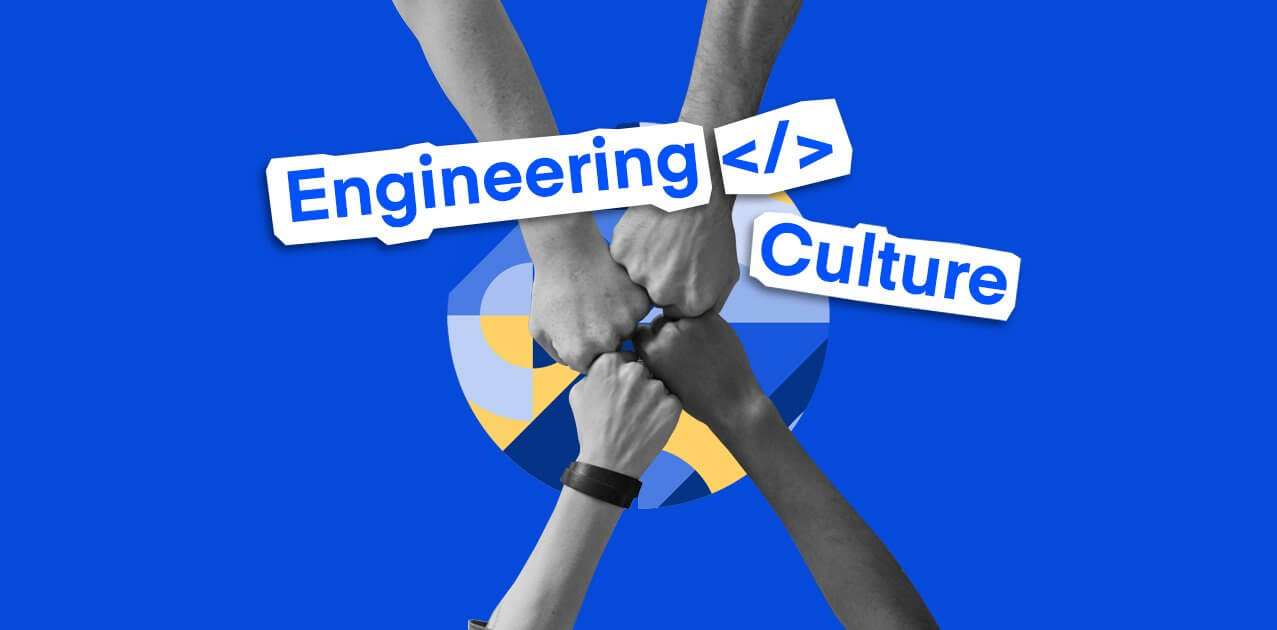An engineering culture consists of the attitudes and behaviors that guide an organization in its engineering efforts.
Your company’s engineering culture is less about the code software developers write, but more about how you preserve the integrity of their work and keep developers engaged.
Hence, the keyword here is ‘culture’, not ‘engineering’. And curating a culture or a collective mindset is much more complex than a purely technical matter.
At Trio, we not only deliver top-tier content and insights in software development but also offer the finest South American developers for outsourcing. Explore our talented Argentinean, Chilean, and Brazilian developers to elevate your projects today.
If you want the 101 on how to build a strong engineering culture within your company, you’re in luck. Here are nine ways to ensure your engineering culture is thriving!
1. Automation Tools
Automation tools are a great way to mitigate the amount of tedious busywork your team has to do on a daily basis.
In a 2012 tech talk, Instagram co-founder spoke about “optimiz[ing] for minimal operational burden”, citing this strategy as the key to scalability.
By outsourcing the handling of repetitive tasks to capable machines, you relieve the burden of trivial work from engineers who are best used elsewhere.
For example, you can embed marketing automation tools in your customer relationship management (CRM) tool to nurture leads and build personalized email campaigns, among other features.
As easy as it is to send a quick introductory email to a dozen new leads, you’d much rather someone else do it.
In this way, automation tools work as a form of time management and business optimization. They streamline necessary but time-consuming tasks.
Competent technology management within your business means deploying the best tools you have available to get the job done.

This signals to those who put stock into your company — be they stakeholders or employees — that you mean business.
An engineering culture blossoms when even everyone is on the same page, meaning that you take your work as seriously as your software engineers take theirs.
2. Speedy Iterations
Whether your managing a remote team or dragging your feet into a physical office every day, software development looks the same on both ends.
That is to say, you’re probably using the Agile method and tuning in to iteration after iteration of development cycles all in the hopes that your final software product will please your eager clients.
Agile software development teams rely on customer feedback to make frequent changes to the software product.
Though they always make sure to keep in line with project requirements, this method of development means making many iterations of the same software.
Ideally, each iteration should be better than the next. But what holds developers back the most is often not technical in nature.
The biggest bottleneck is almost always time.
The more iterations you get out in a speedy manner, the more feedback you have, and the quicker you’ll arrive at a successful finalized project.
But even with something seemingly simple like a change in code or project requirements, there can be pushback.
At times, this requires an overhaul of your company’s software change management process with a change advisory board to boot.
To optimize your iteration speeds, giving developers some autonomy and flexibility to make their own decisions goes a long way.
Strong leadership is equally important in strong engineering culture. Project management in software development plays a crucial role in team coordination and morale.
On a technical level, your team should also aim for continuous deployment, where rapid development is the goal and commits go straight to production.
3. Software Abstractions
One long withstanding component of software engineering overall and to that end, a strong engineering culture, is software abstraction.
Software abstraction is a computer science concept that involves hiding complexity to optimize programming as a whole.
For instance, machines understand code as a series of 0s and 1s. However, developers do not have to use machine code to convey their messages.
Instead, they use a highly abstracted computer programming language like Python or Java and an interpreter or compiler renders a version of your program that a computer can understand.
On a day-to-day basis, most engineers make great strides with object-oriented programming (OOP).
OOP allows programmers to write functions with a set of behaviors and attribute into a class, which serve as plugable objects.
Developers call these objects and reuse them again and again without referencing their originating complexity.
Abstractions of this kind ultimately make programming easier and faster.
4. Code Reviews
In almost every job description for a software developer or engineer, you’ll find that employers are looking for clean and maintainable code.
Hopefully, it goes without saying that you don’t need to dose your developers’ code with soap and water.
What this does mean, however, is that another software professional should be able to look at your developers’ code and get a good idea of what’s going on.
Concise but helpful comments, as well as software abstractions, do a fine job of helping engineers write clean and maintainable code.
But if you want to take it a step further and really drive that strong engineering culture home — or to work, so to speak — then do code reviews.
Letting team members review each other’s code might seem tedious at first. But even the greatest writers do their best work after an extra pair of eyes has given them some feedback.
5. Continuous Learning
I’m sure you’ve heard a couple of old-timers say, “You learn something new every day.” Well, turns out that’s actually true.
Continuous learning describes the notion of learning new skills and expanding one’s knowledge, regularly and incessantly.
In other words, the learning never ends. Within business practices, this concept is wrapped up along the terms of professional development.
Professional developments occur when professionals identify goals for their career in the long term and constantly work towards achieving those goals, adopting a model of lifelong learning.

It’s not unheard of for businesses to support the professional development of their employees.
They equip employees with the finances and opportunities for growth, urging them to participate in various relevant programs such as seminars or online courses.
If it wasn’t clear, you should do the same.
Another interesting take on continuous learning is the 20% project. In 2009, Paul Buchheit, the name behind Gmail, allotted employees 20% of their working hours to work on their passion projects.
With this method, the project can get an employee familiar with a new skill or give them the time to create something truly innovative.
And in the end, the company benefits in some way from what the employee has learned or gained.
6. Cross-Silo Collaboration
In cross-silo collaboration, teams are horizontal, not vertical.
Most businesses use a top-down structure where somebody is always in command of the person below them.
Sure, telling people what to do is a tried-and-true method for getting people to do what you want.
But if you don’t know everything, then at some point you’ll be led astray by your own hubris.
Cross-silo collaboration doesn’t necessarily mean that you throw all the engineering managers away.
It means that even if someone leads, everybody on the engineering team is in touch with the collective insights and ideas of everybody in the room.
And of course, they’re also clued in to the feedback across their department and the company altogether.
True collaboration starts with listening and ends with understanding.
7. Shared Ownership
Individual autonomy is useful when you’re sick of your parents and tired of roommates. But in software development, shared responsibility is the way to go.
More specifically, shared ownership of code reduces risk for the team and relieves the stress of placing all the responsibility on one shoulder.
As a bonus, shared ownership gives engineers a diversity of work to broaden their horizons and not get knee-deep into any one project or technology.
Where your company culture is concerned, this strategy mitigates organizational risks and deters stagnation.
8. Common Goals
When you align your goals with the goals of your engineers, magic happens.
A strong engineering culture is the result of people working together with a shared purpose and vision for the future. But many things need to happen for everything to fall into place.
Consider that the developers on your team are exposed quickly to your beliefs and conventions.
From the moment they read your job description, they start learning about how you carry yourself as an organization.
At that point, your job is to communicate your goals clearly and effectively and make certain that your potential hire is on the same page.
What’s more, you should listen intently to the goals of your applicant and consider whether your business is the right fit for their interests.
After hiring, you should routinely check in with your developers and measure their and the company’s progress in practical ways.
By being communicative in your goal-setting and strategic in your goal-measuring, you guarantee the success of your organization.
9. Welcoming Work Environment
Fostering a welcoming work environment should be a top priority in building a strong engineering culture. In fact, every job field should share the same sentiment.
Whether it’s IT management or flipping burgers, every person has the basic right to feel comfortable in their place of work.
On a software development team, empowering your engineers is one of the most effective ways to make sure they feel welcome.
Brainstorming with your team and encouraging each and every team member to share their thoughts and ideas demonstrates their value to the company.
In addition, research shows that this strategy actually discourages groupthink, and leads to better ideas overall.
When it comes to things outside of the software project, it’s similarly important to listen to the concerns of those around you and give them a benefits package that proves you care.
Hire the Right Team
There are several stepping stones you must surpass to build a truly robust engineering culture. But the first step is hiring the right people.
The right team can take you anywhere you need to go. And Trio is well-equipped to hand-pick the most qualified software engineers for your project so you can go above and beyond.
If you need developers, stop searching and start developing. Talk to Trio today!






